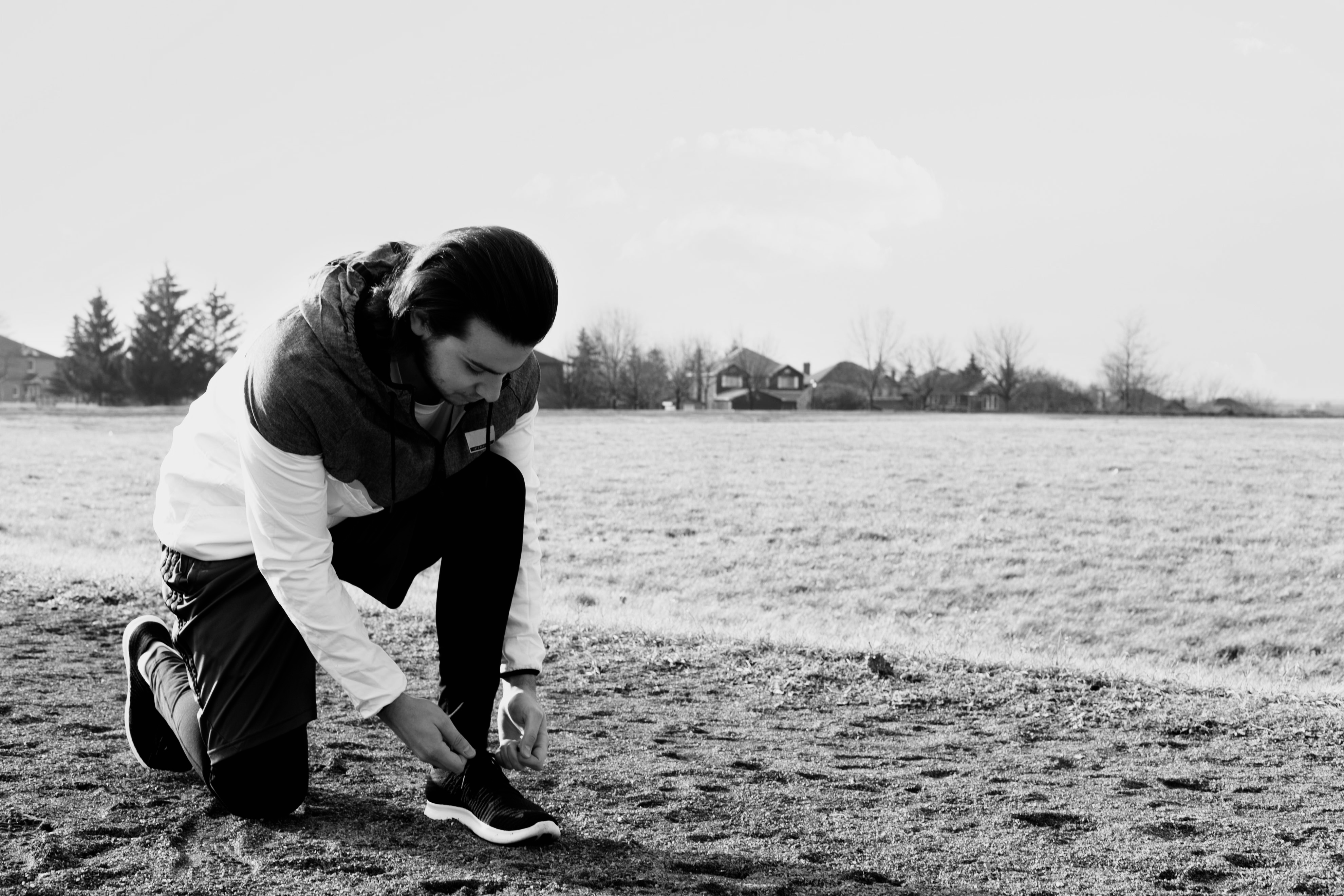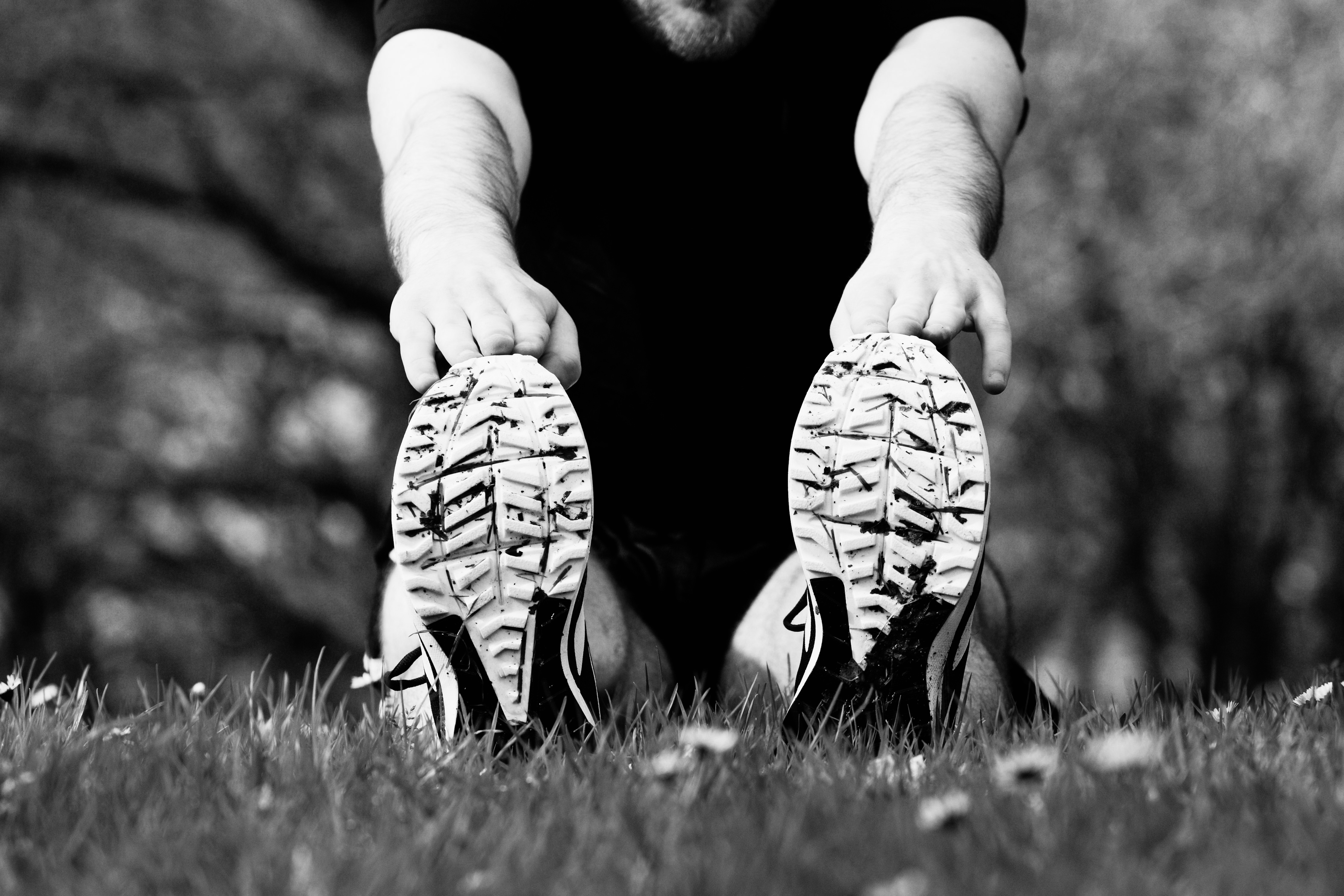The ultimate guide to Breathing & Running (15 mins)
Up to 40% of runners experience shortness of breath which limits their performance while running. As breathing science continues to gain popularity, this has led to recent advancements in our knowledge of using different techniques to improve performance and make breathing easier. This short read provides a brief look at some of the tools you could use to improve your performance.
STOP: Take a deep breath in right now, and slowly exhale…. do it again and don’t breathe in too hard….. and again….. And really emphasise the slow exhale and I am sure you can feel a calmness. The research shows us that the exhale is linked to lowering your heart rate, this is an invitation to your nervous system. This is just one example of how breathing can improve your performance.
From an overarching perspective, as a scientist I want to make your breathing easier, therefore it requires less energy to take a breath and deliver oxygen to the lungs, so you can use the energy for your running muscles. It turns out the breathing muscles do much more than breathe when we are running, they are also extremely important to your stability. So they get tired, just like your quads and glutes when you’re running up a hill. When the breathing muscles fatigue, they elicit a reflex in the body which diverts blood away from your exercising limbs, limiting your performance. This is called the respiratory muscle metaboreflex and we want to avoid this and delay this reflex as much as possible.
We don’t exactly know how the breathing system works, more specifically why our breathing pattern (rate and depth) increase in response to exercise. STOP: Listen to your breathing right now, feel it. Now stand up and do 10 squats, sit down again and listen to your breathing, and feel it. We don’t exactly know why your breathing is now faster and deeper, and this is where science mixes with experience.
As you sit, feeling the increase in breathing rate and depth, it turns out these two variables you can learn to master and improve your performance. It is commonly assumed that our body picks the best breathing pattern when we start exercising, and this couldn’t be further from the truth, especially with marathon running. Recent work indicates that the breathing pattern you choose when running is largely behavioural, meaning it is a learnt pattern. It is largely NOT based on how hard you’re running.
I have worked with many runners, and just one common theme I see is patients who have suffered childhood asthma often choose shallow rapid breathing patterns when running that limit their performance. This requires specific training to overcome, to shift your behavioural response, but everyone can do it.
So let’s first look at how you breathe and the depth of your breath.
1. Depth – this is the first thing to change in response to exercise or stress, we start taking deeper breaths. It turns out there is a right way to do this, if you will place one hand on your tummy and one on your chest. Try and breathe into your belly as you sit there, try expanding the belly and use the primary muscle of inspiration, the diaphragm.
The diaphragm is a wonderful piece of equipment, very efficient, extremely aerobic and to make breathing easier you should prioritise breathing with your diaphragm and breathing into your belly. I usually have patients lying on their back, with a small weight (2kg) resting on their belly, breathing in and pushing the belly up for 2 mins / day.
For those breathing nerds out there, me included, when we are exercising, our breathing volume peaks at around 50-60% of our vital capacity. For untrained persons, it can be as low as 35%, and trained athletes up to 70% of your vital capacity.
When I train people to breathe, one of the first things we do is try to increase the depth of a patient’s breathing without costing too much energy. This comes with technique, flexibility and improved breathing strength. If you don’t do any breathing flexibility exercises, which reduces the work of breathing, you are missing out on an easy win to improve your performance. These can be easily incorporated into warm ups and gym routines so it won’t cost you anymore time.
Now let’s look at:
2. Rate: We can only increase how much air we breathe in a single breath so much, the next way we increase the amount of air we get in, is how fast we breathe.
In fact, when running a middle-long distance, breathing rate is the primary mechanism that we shift to increase the amount of air we need to fuel our body. This mechanism is largely unknown, but it’s often influenced by a variety of factors that you can control. An easy way to explain this is do you find it easier to run with headphones in and your favourite music?
WHY?

It’s proven that listening to music improves endurance exercise, interestingly you need to like the music for that to happen which gives us some insight into the emotional state and the role it plays in performance. Also, the brain is highly sensitive to the feeling of shortness of breath, (feeling puffed) listening to music blocks the sound of your laboured breathing, making your exercise seem easier. Of course, this improves performance.
The problem with running and breathing rate, is at higher intensities and higher perceived exertion levels, we can be susceptible to overbreathing. We can waste energy by breathing too much and more importantly, this can lead to a condition which is prevalent in aerobic athletes called dynamic hyperinflation.
Dynamic Hyperinflation
A condition where we are over-breathing but under ventilating the lungs. When we stack breaths on top of each other, because we don’t fully exhale after each inhale.
STOP: take a deep breath in now, exhale half of your air, now breathe a full breath in from here. It’s hard, to take a full breath, and this is also what happens in dynamic hyperinflation. Breathing is harder and it costs you more energy. This condition needs to be addressed using technique changes and CO2 exposure techniques.
This condition is prevalent in running, later in this article we will ask you to hold your breath. Although not so specific, if you score badly on this test then you should look at nasal breathing, technique and CO2 threshold training to improve your performance.
Active exhale
For highly aerobic activity such as running, it’s necessary for some athletes to aid the body in the normally passive process of getting air out of the lungs. It mostly happens automatically via the lung recoil, however the internal obliques and rectus abdominus (ABS) do most of the active work when we need them. Interestingly it actually makes your breathing easier sometimes, by reducing your lung volumes when you start breathing in. This means if we take a breath in at a lower lung volume, we utilise stored elastic energy in our ventilatory pump to help us breath in, making breathing easier!
STOP: take a breath in, feel how you have to work during your breath in, now, firstly push all the air out of your lungs and take a breath in, do you notice how easy it is at the start of your breath in?
Air just seems to rush in at the start of your breath, this is the stored elastic energy, thankyou body! Some patients I’ve worked with need specific work to improve their exhale, they tend to be highly aerobic sports, patients with a history of asthma or patients who feel out of breath when exercising.
Shortness of breath
The shortness of breath feeling or feeling puffed is complex and varied; recent studies have shown that this feeling, when you notice it, can correspond to the near simultaneous onset of breathing too much. This is why we train marathon runners to hold their breath, become confident dealing with this feeling and which is why nasal breathing can be a great tool in training to assist improve your performance.
So we need to look at your ability to deal with this feeling, measure it, do you have an opportunity to easily and improve your performance?
STOP: Hold your breath now for as long as possible while seated and relaxed, take a deep breath in and time how long until you have to breathe again…..
If you are a recreational runner, and hold your breath for < 1:30 min, or professional athlete < 2:00 min, then you could have an easy and fun way to improve your performance. Your shortness of breath trigger needs to be adjusted with specific training interventions. This could assist you by allowing you to work harder, feel more relaxed at high intensities and delay the fatigue of your breathing muscles.
Nasal Breathing
There is a lot of hype and focus on nasal breathing, it gets too much attention I feel. Humans generally switch airway from nose to mouth breathing as exercise intensity increases generally above 40 L/min which can be a light jog for some people. For high intensity, middle and long distance running you will probably be mouth breathing 99% of the time, or at least using the mouth to move most of the air in combination with the nose, Why?
Because it costs you less energy to breathe using your mouth, and it’s too hard to move the amount of air you need at high intensities just using your nose. This is not to say that nasal breathing is NOT an important tool for you in training and racing when the times and conditions are right.
At low intensity exercise we should prioritise nasal breathing, especially when training. At higher exercise intensities, we should be shifting to the mouth as you feel comfortable. If you did not hold your breath longer than what we mentioned above, you should prioritise some nasal breathing low intensity exercise sessions such as a recovery run or warm up session.

Breathing & Rhythm
A lot of animals including humans couple their running / movement to their breathing. Humans have an advantage to their 4 legged friends, we run standing up which allows us to have greater control over the rhythm of our breathing. We tend to drift towards locking our breath in with an event, foot strike when running, arm lift when swimming. We know that music with a good beat around 125bpm would be a good place to start, along with synching your inhale to foot strike.
When we hit the ground, gravity is acting on the diaphragm encouraging it to drop and aid your breath in. Gravity is giving you a gift, and I recommend you take it. By synching your inspiration to your footstrike you may delay the onset of breathing muscle fatigue and improve your performance.
Nasal breathing and breathing masks are great tools to assist you in training your breathing rhythm. I prescribe nasal breathing to manage CO2 and as a rhythm training tool. I rarely prescribe the breathing mask unless we are dealing with a challenging patient, which could be you, but I would 100% prefer to train using the next method before I use a training mask.
Inspiratory Muscle Training (IMT)
The research is clear, if you strength train the breathing muscles at > 30% of their max, you get reductions in shortness of breath and improvements in your performance. This works across multiple sports and should be a part of your breathing program. There is a general prescription 30 breaths, twice daily at > 30% your breathing muscles max strength to gain the benefits. This is strength training, this is what works to deliver you improvements in the fatigability of your breathing muscles.
But how do I know how strong my breathing muscles are and what do I do?
Good question, we can deliver you a program that will work using a variety of products or simply using your hand as a resistance tool. STOP: Try it now, make a fist and breathe in by putting your mouth next to your thumb and breathe through the hole. Exhale slowly and do this 30 times, tomorrow you are going to be sore in your breathing muscles. It is more complicated than this, only a little, if you have bad technique you’re only going to strength train poor patterns, and this is not good.
How to Breathe
We want to prioritise diaphragmatic breathing, as we have learnt if we time this with footstrike we can reduce the energy cost of breathing which can be up to 10-15% of our total workload. Remember it is also highly aerobic and the most efficient muscle of inspiration, it also positively affects the blood shifting between your legs and your trunk when running further improving your running efficiency by just breathing correctly. We also use our rib muscles to aid in lateral expansion of our chest during inspiration, remember at high intensities we are moving a lot of air when we are exercising and we need that extra help.
It’s easier to look for bad technique rather than teach good technique in a blog, just look for the lifting up of the chest when breathing in, if this is happening at the start of your breath in, this could be an easy win for you. Secondly, think about increasing your exhale times with controlled breathing. It can be easy to purse your lips a little for your exhalation, or humming while breathing out to make a quiet sound, and just take notice of your exhale.
If we have good technique, not overbreathing, we have strength trained our breathing muscles and we are timing our breathing correctly we are doing our best to avoid the respiratory muscles to start fatiguing, if they do, they have a strong response that REDUCES YOUR PERFORMANCE!
Respiratory Muscle Metabo-reflex
Breathing muscle fatigue turns on the respiratory muscle metabo-reflex. We want to avoid breathing muscle fatigue or delay it as long as possible because this is what happens.
When the breathing muscles signal fatigue to the brain the brain diverts blood supply to the breathing muscles to make sure we can continue to breathe. The brain thinks it’s quite important to us, so it prioritises this reflex over your running, swimming or exercise.
So the breathing muscles send a direct signal to the brain to tell the blood vessels leading to the exercising limbs to constrict and limit the blood supply to them, as it’s needed in the fatiguing breathing muscles. THe research tells us that this limits your performance, so its important that we delay this signal or stop it using all available methods.
Conclusion
Breathing is quite simple, yet as we have laid out above, can be quite complex. Outlining the various tools and what the research is telling us it all comes down to making breathing easier. We do this by ensuring our technique and strength is good, make sure we are not breathing too much, and trying to take advantage of synching the breath to foot strike.
Reach out if you have any questions.
Fletcher
